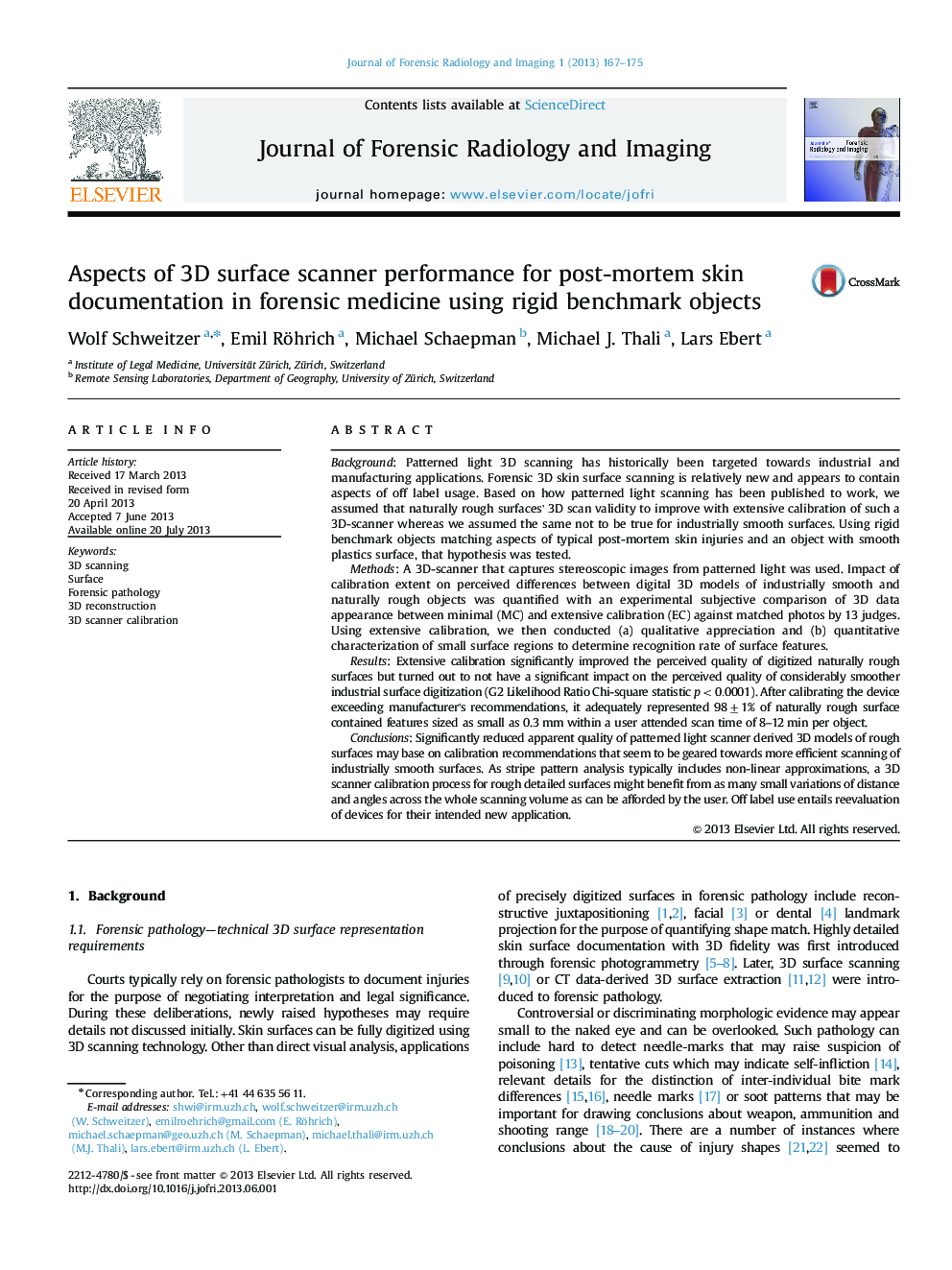| Article ID | Journal | Published Year | Pages | File Type |
|---|---|---|---|---|
| 103301 | Journal of Forensic Radiology and Imaging | 2013 | 9 Pages |
Background: Patterned light 3D scanning has historically been targeted towards industrial and manufacturing applications. Forensic 3D skin surface scanning is relatively new and appears to contain aspects of off label usage. Based on how patterned light scanning has been published to work, we assumed that naturally rough surfaces' 3D scan validity to improve with extensive calibration of such a 3D-scanner whereas we assumed the same not to be true for industrially smooth surfaces. Using rigid benchmark objects matching aspects of typical post-mortem skin injuries and an object with smooth plastics surface, that hypothesis was tested.Methods: A 3D-scanner that captures stereoscopic images from patterned light was used. Impact of calibration extent on perceived differences between digital 3D models of industrially smooth and naturally rough objects was quantified with an experimental subjective comparison of 3D data appearance between minimal (MC) and extensive calibration (EC) against matched photos by 13 judges. Using extensive calibration, we then conducted (a) qualitative appreciation and (b) quantitative characterization of small surface regions to determine recognition rate of surface features.Results : Extensive calibration significantly improved the perceived quality of digitized naturally rough surfaces but turned out to not have a significant impact on the perceived quality of considerably smoother industrial surface digitization (G2 Likelihood Ratio Chi-square statistic p<0.0001p<0.0001). After calibrating the device exceeding manufacturer's recommendations, it adequately represented 98±1% of naturally rough surface contained features sized as small as 0.3 mm within a user attended scan time of 8–12 min per object.Conclusions: Significantly reduced apparent quality of patterned light scanner derived 3D models of rough surfaces may base on calibration recommendations that seem to be geared towards more efficient scanning of industrially smooth surfaces. As stripe pattern analysis typically includes non-linear approximations, a 3D scanner calibration process for rough detailed surfaces might benefit from as many small variations of distance and angles across the whole scanning volume as can be afforded by the user. Off label use entails reevaluation of devices for their intended new application.
